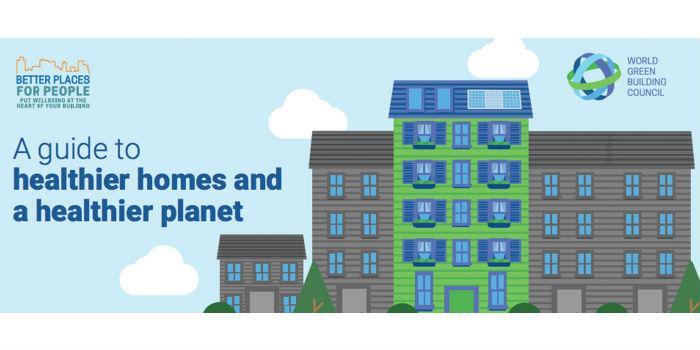 International. The World Green Building Council released a new guide to creating healthier homes that, in turn, are healthier for the planet. The guide takes a combination of the latest research on air quality, thermal and acoustic comfort, and lighting, and translates it into simple, low-cost, and practical strategies to make the home environment healthier for both people and the planet.
International. The World Green Building Council released a new guide to creating healthier homes that, in turn, are healthier for the planet. The guide takes a combination of the latest research on air quality, thermal and acoustic comfort, and lighting, and translates it into simple, low-cost, and practical strategies to make the home environment healthier for both people and the planet.
The world's buildings have a direct impact on both the environment and personal health and well-being, as well as having huge financial implications for owners and occupants.
The report explains that on average, we spend 90% of our time indoors, so the quality of the air we breathe can have a huge impact on our health. More than half of the body's air intake over a lifetime is inhaled at home. However, for 92% of us, the air around our homes is not safe to breathe and is linked to a variety of health risks.
Poor insulation and building construction are often the cause of low energy efficiency and can compromise occupant comfort and health. Around 65% of Europeans living in major urban areas are exposed to dangerously high levels of noise pollution. This can lead to health problems such as stress, high blood pressure, hypertension, and strokes.
A study on living in a dark home found that health worsened by 50% with headaches, insomnia and depression, among other reported negative health impacts. Therefore, good quality light, daylight when possible, is essential for a healthy life. Natural lighting is also an important energy reduction strategy in the home.
Cristina Gamboa, executive director of the World Green Building Council, said: "Buildings and construction contribute close to 40% of the global energy-related carbon emissions that cause climate change and contribute to air pollution that causes around four million deaths a year. Therefore, the industry must look for ways to make buildings and homes good for human health and beneficial for the environment.
"Our key message is that homes and buildings around the world must be sustainable for people and the planet. By publishing this guidance, we hope this information will enable owners and occupants to invest in a healthier home."
The guide recommends measures to make a healthier home, such as:
- Ventilate your home to remove toxins hidden indoors and bring fresh, clean air into your home
- Invest in insulation to increase energy efficiency, thermal comfort, less noise and lower energy bills.
- Maximize the use of daylight and be efficient with lighting to reduce carbon emissions, reduce energy costs, and unlock health benefits.
Vijoleta Gordeljevic, Health and Climate Change Coordinator, Health and Environment Alliance said: "The energy-efficient cities of the future must also become healthier cities. Following the recommendations of the Healthy Homes Guide, building occupants can play a key role in ensuring that the buildings we live in, work and study not only protect but also promote our health."
Patty Fong, Director of Buildings and Urban Systems, European Climate Foundation, said: "This guide makes an important contribution to raising awareness of how the quality of our homes can negatively affect our health and productivity. By making the recommended improvements, we can make our living space healthier while also contributing to climate change mitigation."
The Guide "Healthier Homes, Healthier Planet" can be downloaded by clicking here.














